![What is Digital Transformation? [A Comprehensive Guide to Successful Digitalization Through Effective Strategies, Platforms, and Technologies] What is Digital Transformation? [A Comprehensive Guide to Successful Digitalization Through Effective Strategies, Platforms, and Technologies]](/sites/default/files/image_1723.png)
With digital transformation growing at a compound annual growth rate of 19.48%, one thing is certain - It is not something you can ignore.
Every organization, from a small enterprise to an industry leader, is undergoing digitalization. Despite this, its success rate isn't as high as its investment.
The latest statistics show that 70% of businesses are implementing digitalization, but only 24% of them are successful.
There are three main reasons for this failure: an unclear understanding of transformation, the wrong choice of digitalization technology, and a lack of clear strategy.
Therefore, be sure to have complete information about the process before embarking on your transformation journey. If you dont know where to begin, keep reading.
This guide will walk you through everything you need to achieve successful digitalization, including:
- What exactly is digital transformation?
- Why is it crucial for your organization?
- What are the main drivers of business transformation?
- Challenges encountered during digital transformation
- The roadmap to successful digitalization
- Business transformation best practices
- Top digital transformation technologies
- The leading digital transformation platforms for associations
- How to get digital transformation consulting?
So let’s begin.
What is Digital Transformation?

Digital transformation is often poorly understood. It is viewed as an investment in digital technologies to improve processes. However, it is much more than that.
Essentially, Digital transformation means fostering an organizational culture that includes incorporating technologies, upskilling employees, innovation, and experimentation.
As a result, the organization is able to achieve a high level of customer satisfaction, exceptional quality, and a strong competitive position.
There are four main areas of businesses that undergo a transformation:
- Processes - Workflows and data analytics
- Business models - Infrastructure and core models
- Domains - business website
- Culture - workforce training, goals setting, re-imagining mission, and vision.
Thus, culture is an essential part of digitalization.
Using cutting-edge technologies without delivering value to customers results in financial and strategic losses. Likewise, transformation cannot happen without challenging the status quo and being comfortable with failure.
Why Is Digital Transformation Crucial for Organizations?
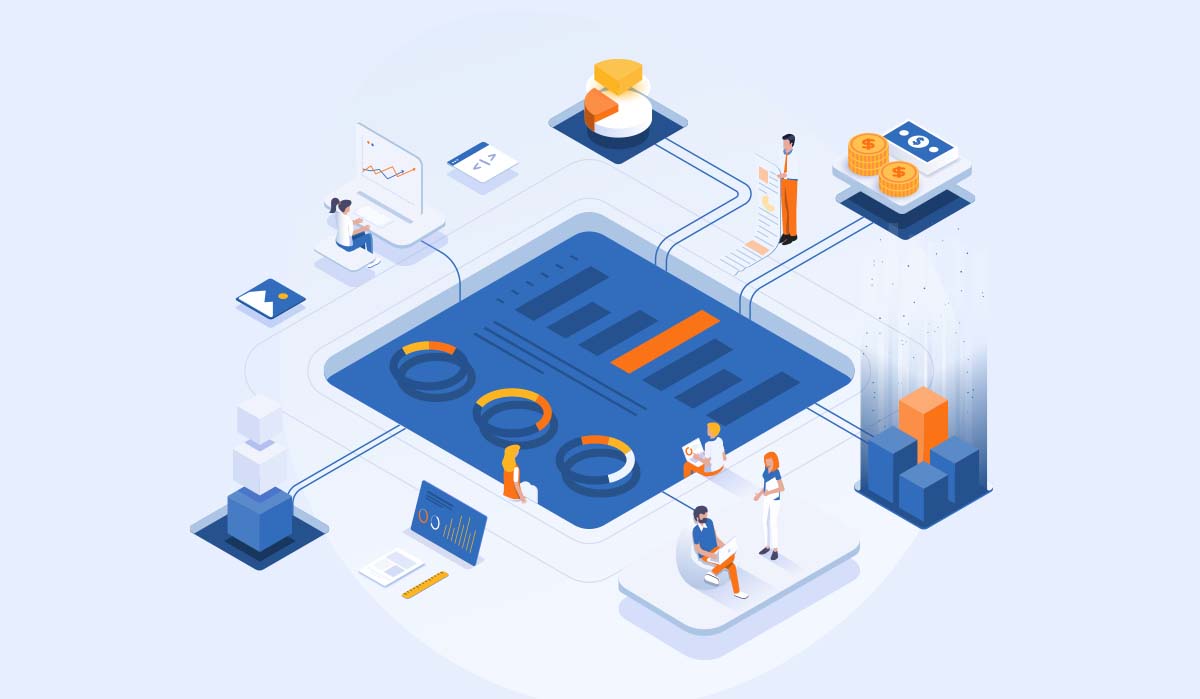
Digital transformation has become a global phenomenon.
Organizations of all sizes have spent billions of dollars on digitalization. In spite of the fact that many companies have gone to stay competitive, their ultimate goal remains the same - to survive in this digital age.
Many organizations were put under increasing pressure to cope with disruptions and adapt to rapidly evolving customer expectations in the wake of the pandemic. 90% of companies migrated to the cloud, showing the rapid adoption of digitalization.
Because businesses are primarily motivated by improving customer experience, it is not wrong to say that this is the main driving force behind digitalization.
As top entrepreneurs put it - Seamless customer service is the single most important factor for how a company will perform.
The Ultimate Goal of Business Transformation
With digital transformation, organizations can benefit from improved customer service as well as a strong relationship with employees and partners.
The integration of digital technologies in business workflows is, therefore, carried out with the following objectives in mind:
- Improve the speed of new product and service development.
- Boost employee productivity.
- Provide a more convenient and engaging customer experience.
- Become more familiar with individual customers to better anticipate and respond to their needs.
Digital Maturity Benchmarks to Measure the Success of Business Transformation
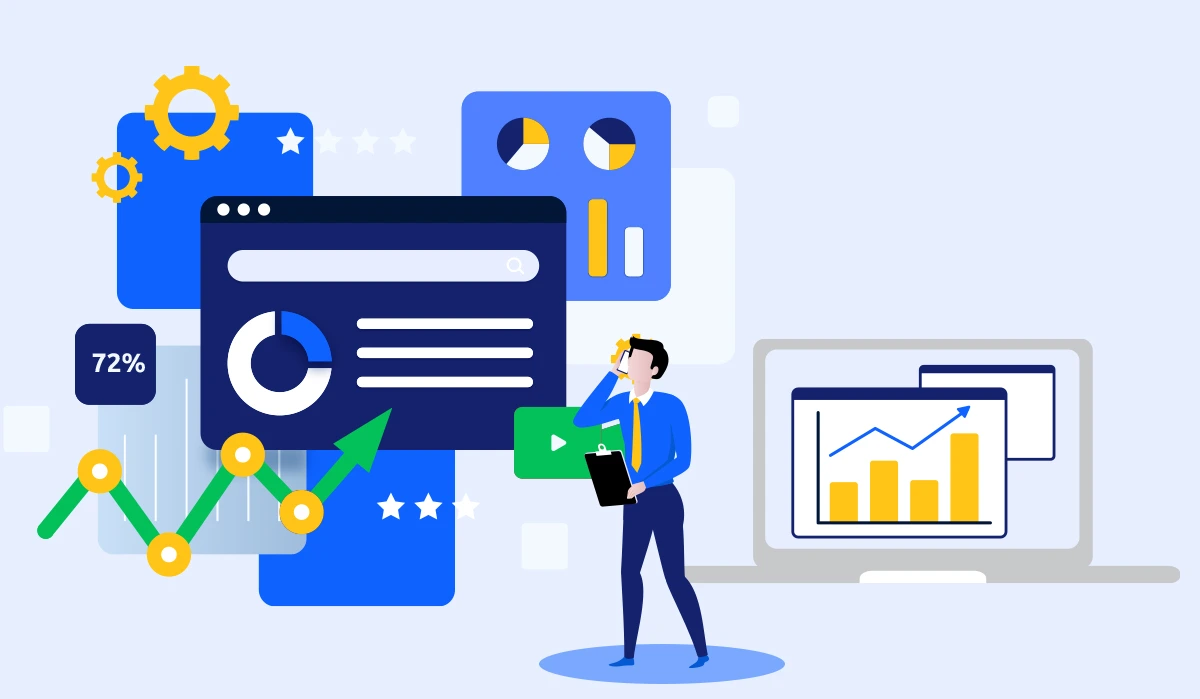
A digital transformation is more than just a project involving technology implementation. It is a holistic journey with several milestones.
So how can you ensure that your transformation journey is not failing and you are going in the right direction?
The answer is - by analyzing your performance against the set digital maturity benchmarks.
These include:
Boost in Return on Digital Investments
The Return on Digital Investment tells you how much money you brought in versus how much money you spent on the digital transformation of your business.
As you continue to succeed in your digitalization journey, you will see a decrease in expenses on new technologies, training, and hiring with an increase in your revenue.
It's important to remember, however, that returns can take time to show. When you measure your ROI in the initial phases of transformation, you may not see a big difference, but over time it will give you a better picture of its success.
Enhanced Employee Productivity
The digital transformation process improves employee productivity and helps them accomplish more in less time.
Technologies such as AI and RPA boost employees’ productivity, reduce errors, and increase process efficiencies through revamped business processes.
Improved Customer Experience and Engagement

This is the most important KPI for measuring digital maturity. As you progress in your transformation journey, you will notice an increase in customer engagement and loyalty.
Customer experience can be measured using the following matrices:
- Customer effort score (CES): This measures how much effort customers have to put into completing a task.
- Customer satisfaction (CSAT): The level of satisfaction a customer has with your product or service.
- Net promoter score (NPS): The likelihood that a customer will recommend your product or service to a friend or colleague.
In addition, you can measure customer satisfaction by gauging engagement and conversion metrics on your website. Among these are website clickthrough rates, demos booked, number of subscriptions, and signups.
AI-Enabled Businesses

The role of artificial intelligence in sustainable business growth cannot be underestimated. You will notice an increase in the use of AI in your business as part of your digital transformation journey.
Increase in Reliability & Availability
Building a strong brand reputation requires a reliable digital presence. The incorporation of digital platforms like chatbots will make you available 24/7, increasing your availability.
The transformation of your business affects your team's equipment and software as well.
By integrating digital culture, you'll enhance internal digital solutions as well as customer service.
Here are some well-known reliability and availability metrics you can use to measure the change in your business reliability:
- Uptime: The amount of time equipment or software is functional.
- Mean time to failure (MTTF): How long does an asset last before it fails?
- Mean time to resolve (MTTR): The duration of the failure resolution process.
- Mean time before failure (MTBF): The interval between failures.
Digital transformation Benefits

Even though the ultimate benefit of digital transformation is long-term success and growth, these initiatives serve many other purposes for organizations as well. Among them are:
Boosts Revenues While Reducing Labor Costs
Transforming your business with technology is the most impactful way to improve efficiency.
For instance, investing time and money in training new employees and updating digital assets can quickly spiral out of control for enterprises.
Automating your workflows allows you to reduce labor and time while increasing productivity at the same time.
Provide a Unique Customer Experience
Customers today want to look for a great experience through multiple digital touchpoints such as mobile apps, social media, and live chat.
Digitalization allows businesses to provide the unique experience their customers are looking for. A good example is the organizations that use association management software to improve their member experience through convenient application and renewal processes.
Maintains Your Competitive Edge by Driving Innovation
Global spending on digitization technologies has reached around $3 trillion globally. This means that whether you are considering digital transformation or not, your competitors are.
Incorporating technology into every aspect of a business creates sophisticated operations that increase a company's bottom line while delivering more value to customers.
As an early driver of business transformation, you can gain an edge over your competitors who have just begun their transformation journey.
Improves Customer Engagement
As organizations optimize their processes with new and improvised technologies, they can make smarter decisions and anticipate the needs of their stakeholders. Thus, they can better engage their members, employees, and their business partners.
These benefits further contribute to the ongoing transformation, increasing success two-fold. Automation allows employees to shift to more innovative and higher-value work while agility enables them to quickly identify and capitalize on opportunities.
Challenges Associated With the Digital Transformation of Business

An analysis by Gartner found that 91% of organizations launch digital transformation, however, only 40% can manage to scale it.
Another report by Statista indicates that 70% of digitalization initiatives fail due to flawed strategies and incorrect technology choices.
This reveals one of the major challenges associated with digitalization - the lack of digital culture.
Most companies that weren't born digital still rely on old technologies that don't support digital transformation initiatives (DTI), and they can't easily be replaced. As a result, these organizations struggle to create a corporate culture that supports change.
Leaders who refuse to replace old technology or fail to obtain the necessary executive and board-level support for investing in technology overhauls are unlikely to make digital transformation happen.
Some other critical factors responsible for the failure of digital transformation are:
- Lack of employee engagement
- Insufficient management support
- Little or no cross-departmental collaboration
- Failure to people holding accountability
- Security and privacy concerns related to data
- Insufficient funds
- Limited skills and competencies of the workforce
Unless such factors are taken into account, companies will always end up with a stack of new digital tools that do not produce any results.
They will spend millions of dollars on technology without achieving their true digitalization goals which include establishing a culture of innovation, providing value to customers, and gaining a competitive advantage.
Digital Transformation Drivers

Increased customer demands and expectations have always been the greatest transformation drivers. Customers expect to conduct all their businesses digitally, with immediate access to all the information and content.
Another aspect of this is the development of technologies that enables new kinds of information and capabilities accessible in seamless ways.
In response, businesses try their best to increase their capabilities to provide convenience to their customers, with the goal of meeting their ever-escalating expectations.
Thus, they undertake the following initiatives that serve as the organization’s entry point for digitalization.
Streamlining Business Processes Through Automation
The integration of AI and automation help organizations serve their customers better and provide higher-value services.
Additionally, smart workflows enable employees to make informed decisions, resulting in streamlined operating models, and increasing productivity.
Maintaining Stability During Disruptions
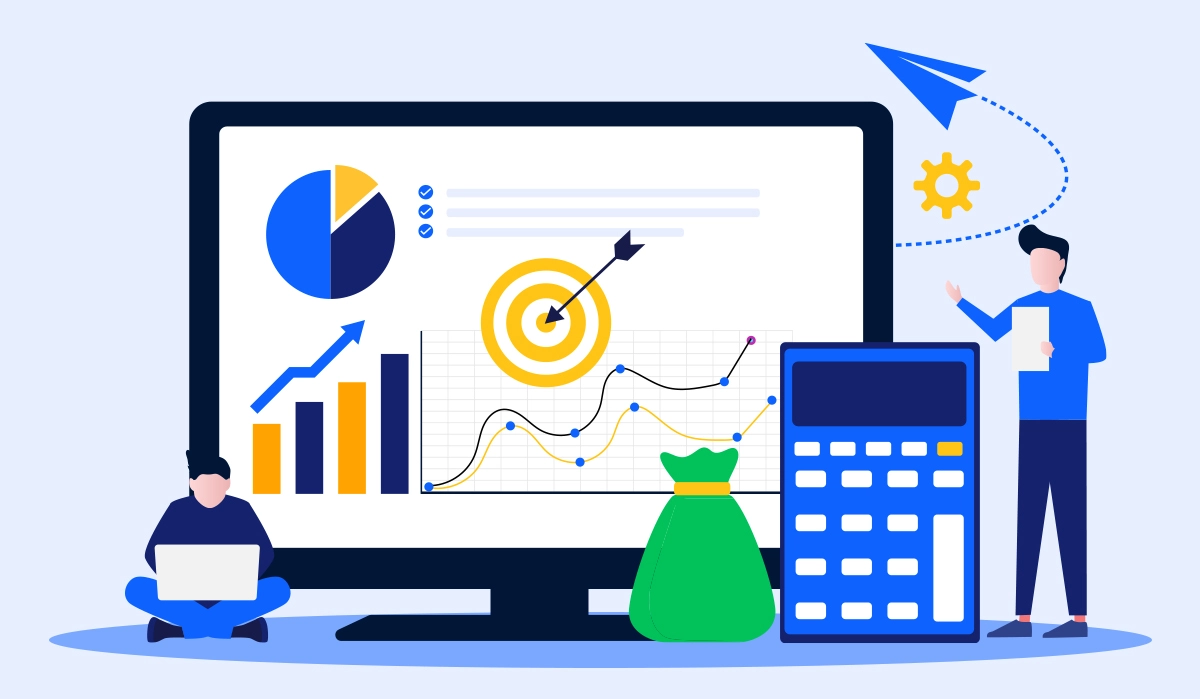
Businesses can experience disruptions at any time. Digital transformation enables an organization to adapt to competitive threats, changing market trends, and rising customer expectations using digital tools and techniques.
Effectively Coping With Change
In addition to modernizing business processes, digitalization involves interoperating with modern applications and running them on modern infrastructure. Thus, it facilitates acquisitions and mergers, building resilience in organizational frameworks and systems.
Offering More Resources With Fewer Restrictions
Through digital transformation, businesses can access the most comprehensive range of solutions and services from industry leaders and partners. As a result, they have more resources on demand with fewer restrictions.
How Can Member-Based Organizations Get Started With Digital Transformation?

Digital transformation is a multi-step process that requires a solid strategy and thorough planning. Hence, developing a business transformation roadmap is crucial to ensure successful outcomes.
Before you get started with IT transformation, you need to ask yourself the following questions:
- How can my business benefit from digital transformation?
- What are the best ways to transform my business digitally?
- What are the resources and costs of achieving successful transformation?
- How long does it take for a successful transformation to take place?
- How can I get a leg up on my competitors in the future with digital transformation strategies?
Once you have answered these questions, you can then create your digitalization framework to make sure your planning and execution are on target.
Digital Transformation Framework for Member-Based Organizations

An IT transformation framework is a roadmap that describes how an organization will move through periods of significant change resulting from evolving business conditions.
All levels of an organization use frameworks to guide them through the journey. As a result, no aspect of the business is left behind during the change process.
By providing a common reference point, the digital transformation framework allows the organization to evolve as it changes.
Essentially, the business transformation roadmap has three major phases:
Phase 1: Redefining Organizational Values

The first phase of transformation involves redefining corporate values, enabling innovation, digitization, and establishing commitments from your team members.
By reinforcing these values, you can reshape the culture of your association, find the right talent, and fulfill your mission.
Essentially, phase 1 consists of:
- Identifying pain points of members and gaps in current processes
- Developing SMART goals
- Establishing clear, actionable plans
- Ensuring commitment from team members (including the board of directors, volunteers, sponsors, and employees)
- Securing sufficient funds
(For a detailed explanation of each step, read our step-by-step guide to creating and implementing the digital transformation roadmap)
Phase 2: Getting Started with Transformation
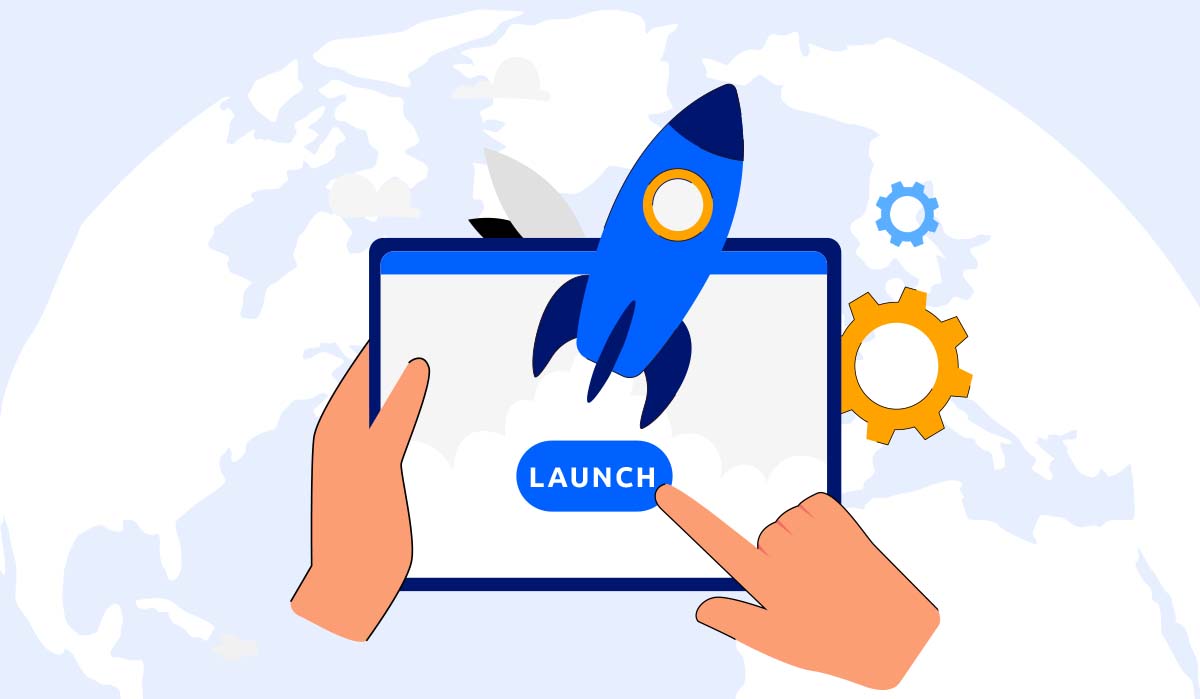
As soon as you have outlined your goals, plans, and investments, it's time to take your digitalization journey to the next level. Since it's a lengthy process, we recommend taking one step at a time to guarantee optimum results.
Phase 2 consists of:
- Appointing tech leaders
- Launching a lighthouse project
- Digitizing the existing workflows
- Adding new digital models in business operations
- Upskilling team members
- Embracing the new digital culture
Phase 3: Accelerating the Digitalization
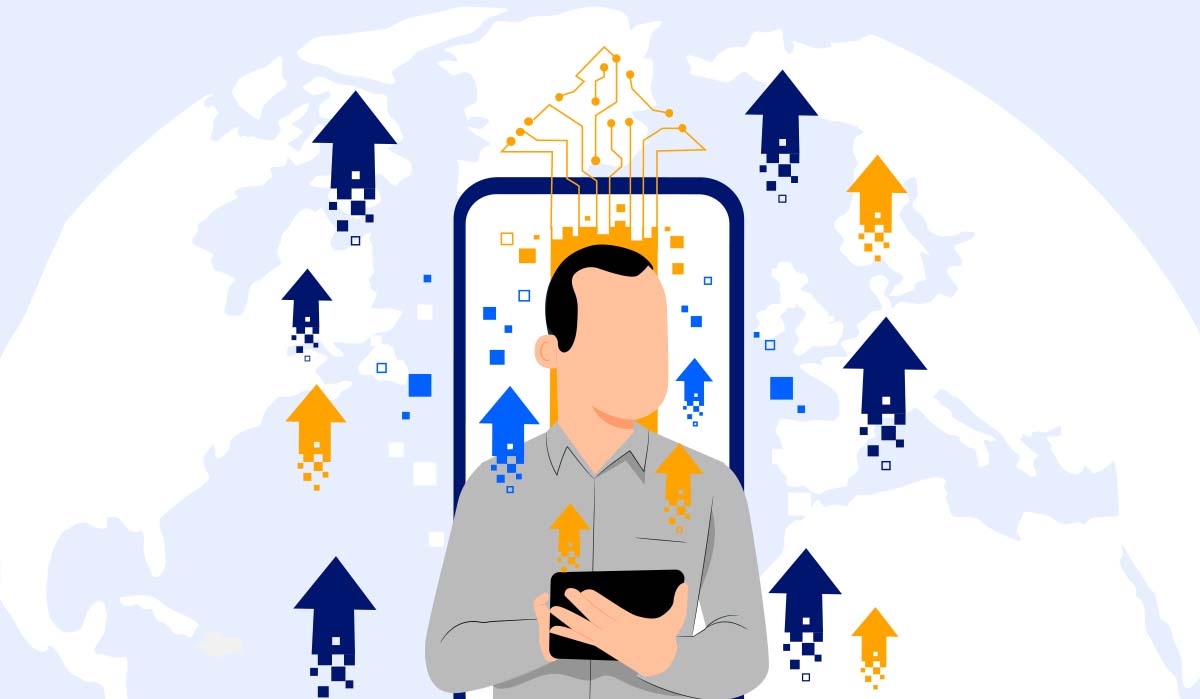
It usually takes companies 12 to 18 months to make good progress, depending on how well they launched digitalization.
Further leveling up your transformation journey will require expanding your digital efforts. You'll also need to develop a better training system, upgrade your technology stack, and adopt new operating models to maximize the benefits.
Therefore, your plans for phase 3 should include:
- Optimizing initiatives to maximize profits
- Implementing advanced tracking models
- Creating a platform for upskilling
- Laying a solid foundation for the future
The Best Practices for Achieving Business Transformation

Most companies, when going through business transformation, focus only on short-term goals which ultimately results in failure. They forget that digitalization is a journey that calls for re-invention of the entire organizational infrastructure.
Thus, a transformation strategy incorporates change at every single level, from day-to-day procedures to the major organizational hierarchy through the following steps:
- It takes into view the core values, strengths, weaknesses, and competitive landscape of the business
- Analyze the current situation
- Identifies the customers’ pain points and gaps in the business to recognize the areas for improvement.
- Develops a plan for moving forward on the transformational journey.
Integrating digital technologies across all aspects of an organization promotes better efficiency, collaboration, and customer satisfaction. (Check out our digital transformation strategy guide for a step-by-step approach to digitalization)
If you are going through a business transformation, make sure to follow the above-given steps to avoid disaster. In addition, you must ensure the following best practices to realize your long-term goals in regard to digitalization.
Invest in the Most Effective Digital Technologies
Don't limit yourself to one technology. Drive innovation by using a combination model whenever possible. Also, utilize project management, time tracking, and social media management tools to increase employee productivity.
Increase Funding for Technology Research and Development
Don't spend all your resources on execution. Make sure you invest in a Research and Development department so you can make effective discoveries.
Aside from creating new products and improving existing ones, R&D also helps organizations improve marketing strategies and reduce costs.
Analyze Business Data to Improve Digital Systems

Ensure data analysis at frequent intervals. Analyze member data biannually to discover member trends and patterns. Combine it with machine learning and AI to make informed decisions.
Keep an Eye on Your Competitors
Learn from the industry leaders and competitors by observing their activities, products, and customer personas. Attend seminars and events to strengthen your business network and keep yourself updated with the latest technological trends.
Upskill Employees Through Effective Training
Build a culture of continuous learning and upskilling through effective training and certifications. Include interactive software and tools that boost education by making learning fun and challenging.
You can also introduce personalized training for each employee by implementing AI learning management system.
Analyze and Optimize Processes and Technologies Through A/B Testing
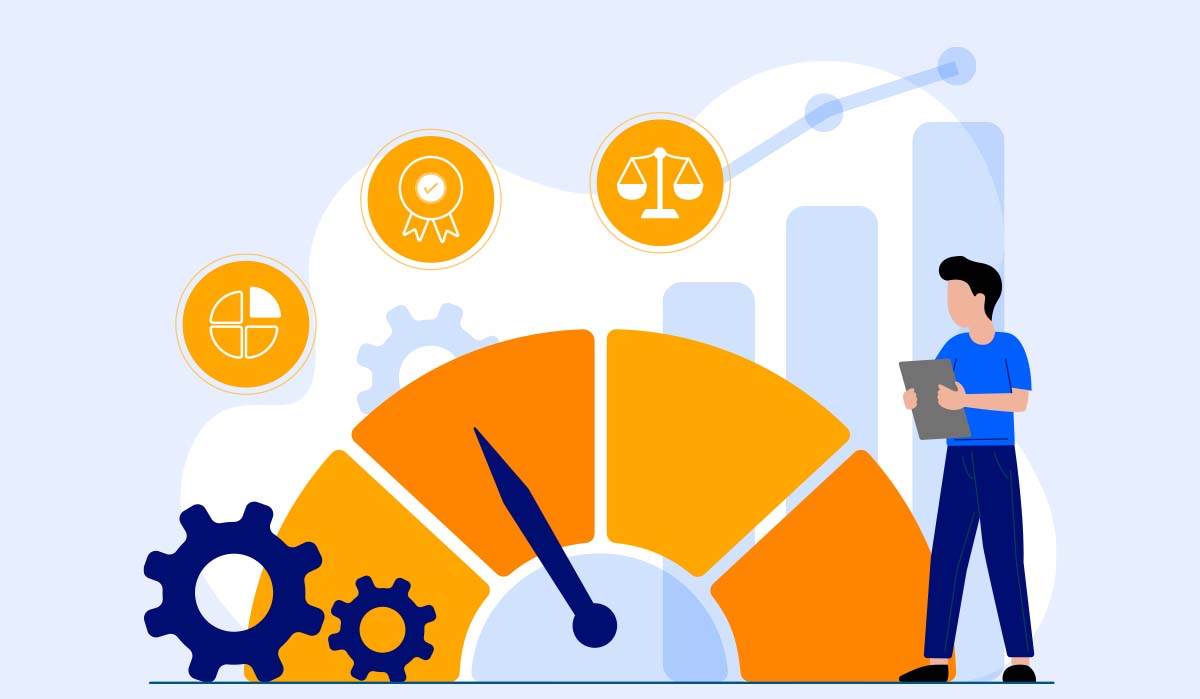
Test different technologies and processes to find out which one is best. As a result, you will not only have more transparency in your processes, but you will also get faster results. Additionally, you can mark failed KPIs or errors during testing.
A/B testing can be performed for member-based organizations to improve the user interface, automate processes, or determine what membership types work best.
Adapt to the Needs of the Members
Identifying and meeting your members' needs is essential to adapting to their needs. Follow these steps to make sure you fulfill their needs:
- Send out emails or questionnaires for open-ended feedback.
- Organize in-person or online meetings every month.
- Utilize RTC platforms like Spark to conduct meaningful discussions regarding their overall experience, preferences, and suggestions.
- Utilize a data analytics platform to generate better suggestions based on the information you have gathered.
Roles and Skills Involved in Digital Transformation

While emerging tech and revamped processes are crucial, having the right workforce with exceptional skills is essential to any technological digital transformation.
Some of the key roles for companies seeking digitalization include:
- Software engineers: Design, build and test end-user applications by analyzing and modifying existing software.
- Cloud computing specialists: Assist with the migration of data, applications, and services to the cloud by assessing opportunities for deployment, optimization, and protection.
- Digital product managers: Monitor the entire product lifecycle, from ideation to launch. This includes managing customer research, product architecture development, UI development, and supply chain planning.
- DevOps leaders: Combine development and operations to accelerate software delivery by making continuous improvements.
- Data scientists and data architects: Analyze vast amounts of data received from Artificial Intelligence and Machine Learning for transformations.
- UX designers: Design user experiences that are satisfying and compelling based on user research and workflow analysis.
- Digital trainers: Design and implement training programs for global staff in acquiring and maintaining the necessary skillsets for using a variety of enterprise-wide software.
- SAAS-based writers: Write in-depth content, such as landing pages, emails, blogs, whitepapers, and case studies about technologies, to build marketing funnels.
- Brand strategists: Develop marketing plans based on trend analysis of consumer needs and market research to enhance branding efforts.
- Ethics compliance managers: Establish and maintain ethical and compliance standards for expanding operations, recruiting, and acquiring assets.
- Workplace technology managers: Coordinate closely with other departments such as finance and HR to ensure employees have the technology they need to perform their jobs.
The importance of leadership cannot be overstated when it comes to transformation roles. In some cases, CIOs simply rebrand themselves as Chief Digital Officers (CDOs) to describe their position. In most cases, it is the CEO who leads the entire project.
As long as someone is competent at utilizing technology to drive revenue growth, it doesn't matter who owns the imperative of digitalization.
Digital Transformation Technologies for Associations

The right use of technology is as important in digitalization as the right strategizing, as they:
- Empower organizations to innovate new services
- Improve their capabilities through digital transformation solutions
- Make informed decisions
- Enhance their business relationships
- Future-proof themselves
Currently, there are several digital transformation technologies that are useful for membership organizations to achieve successful digitalization. Here are some of them.
Mobile Technology
According to the latest stats, 92.1% of people globally use mobile phones to search online, making it the most important technology in digitalization. In fact, 70% of CEOs consider it more important than IoT and cloud computing.
For associations, mobile technology is important to keep members engaged online. In other words, it means designing mobile-friendly websites, online platforms, communities, and social media channels.
Internet of Things (IoT)
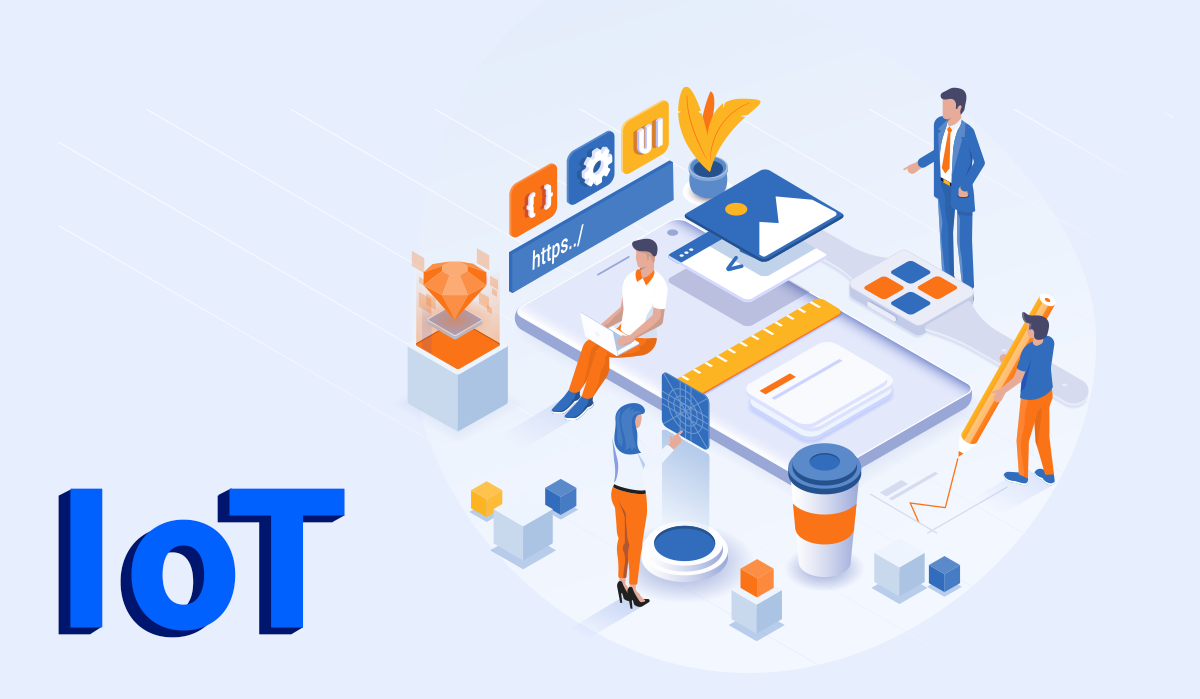
Internet of Things (IoT) is a network of interconnected systems that automatically collects, stores, and shares data. It also can analyze the information which includes identifying patterns, suggesting solutions, and forecasting possible issues.
It is also possible with IoT to determine which data is useful and which can be discarded safely.
A member-based organization can use IoT alone or in combination with other tools to accelerate its digital technology transformation.
In addition to increasing efficiency and reducing costs, it can also strengthen its business by coming up with innovative solutions.
Smart Robotics
Smart robotics are capable of analyzing and improving their performances based on the data they are fed with. They are also able to enhance users’ digital experiences and improve productivity.
They can also perform cognitive tasks and automation, ultimately increasing the efficiencies of businesses. Since events are a major part of member-based organizations, smart robotics can be used in improving their experience through virtual gamification.
It utilizes gaming principles in virtual meetings, including digital competitions and challenges. As a result, it serves as an ice breaker for participants by encouraging them to converse and exchange ideas.
Artificial Intelligence and Machine Learning
Artificial Intelligence (AI) can simulate the human brain in many ways, such as voice assistants, natural language processors, and smart devices. In the same way, machine learning can assist in making smart decisions by extracting data and patterns.
By combining Artificial Intelligence and Machine Learning, member-based organizations can better understand their members' personas and improve their services.
Also, they can use these systems for evaluating and contextualizing data so that information or actions are automatically triggered without the need for human intervention.
They can also learn human complex patterns and make predictions for future needs.
Augmented Reality
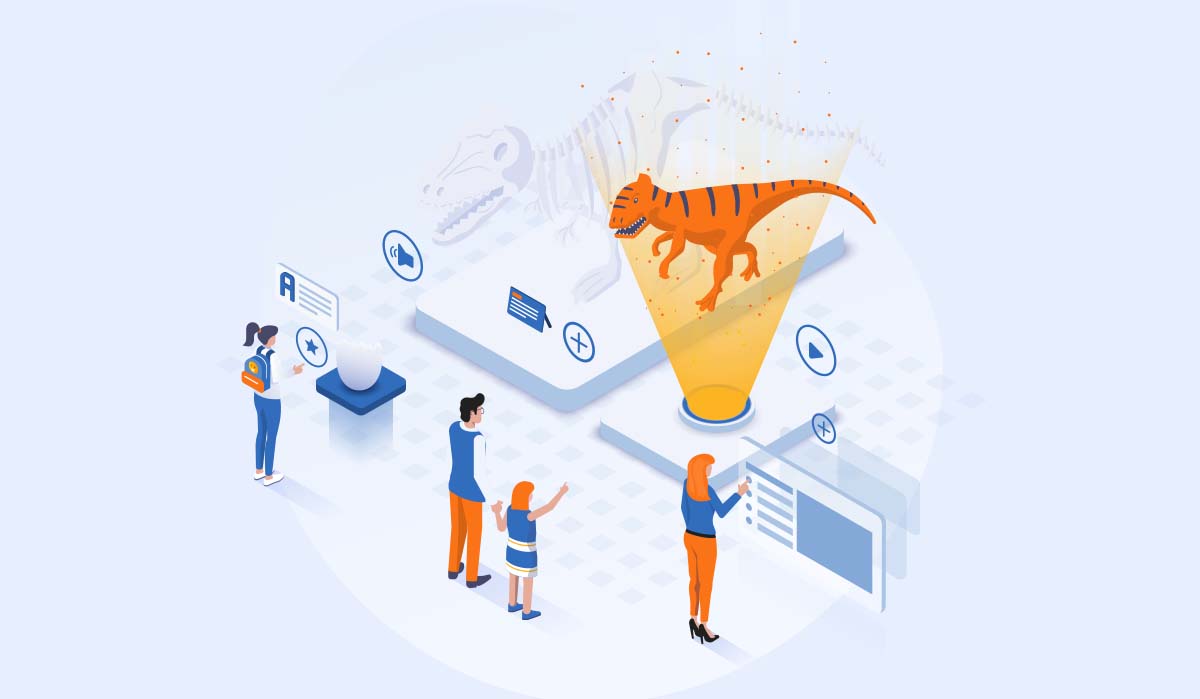
An augmented reality (AR) system adds digital elements and sounds to the real world.
It is a combination of mobile technology and real-time data to produce visual graphics. Thus, customers can experience a virtual preview of products and services.
A good example is product development, in which designers can see a 3D model of a product without having to build prototypes.
In the same way, it can enhance the experience of attendees for associations. Additionally, it can increase membership by:
- Create a virtual walk-through for potential customers based on previous footage of the events.
- Constructing virtual experiences with product demos.
Big Data and Real-Time Analytics
Using big data analytics, one can receive valuable information such as customer behavior (including interests and behaviors), market trends, and correlations between different types of data.
Membership organizations benefit from real-time analysis in several ways, including:
- The ability to access and analyze large volumes of data from various sources allows businesses to gain new insights and take action.
- Identify potential risks and needs of customers when developing new products and services.
Digital Twin
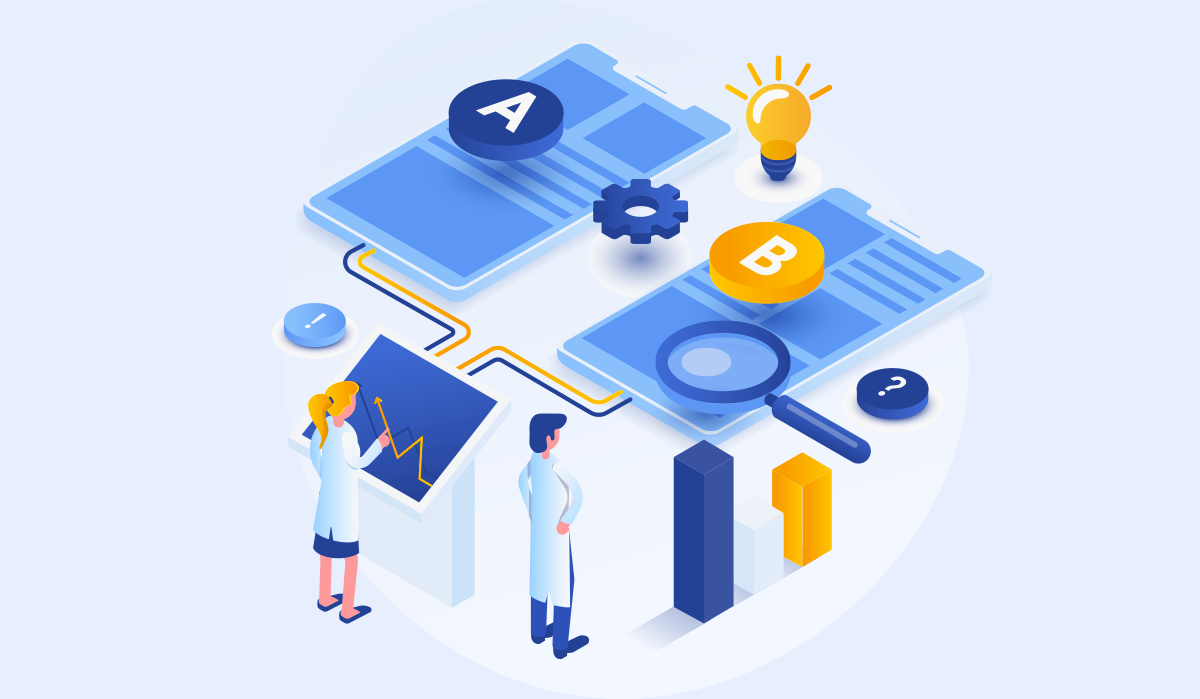
Digital Twins create virtual replicas of processes or services using 3D modeling. Using this tool, data from simulations can be collected and used to predict the performance of processes.
As a result, they can be linked with IoT, AI, and big data technologies to drive innovation in business processes. Digital twins can improve the competitive position of member-based organizations by enabling data-driven insights, optimizing member journeys, and increasing trust among members.
Furthermore, it increases donor engagement, lowers operating costs, and streamlines processes for nonprofits.
API-Based Integrations
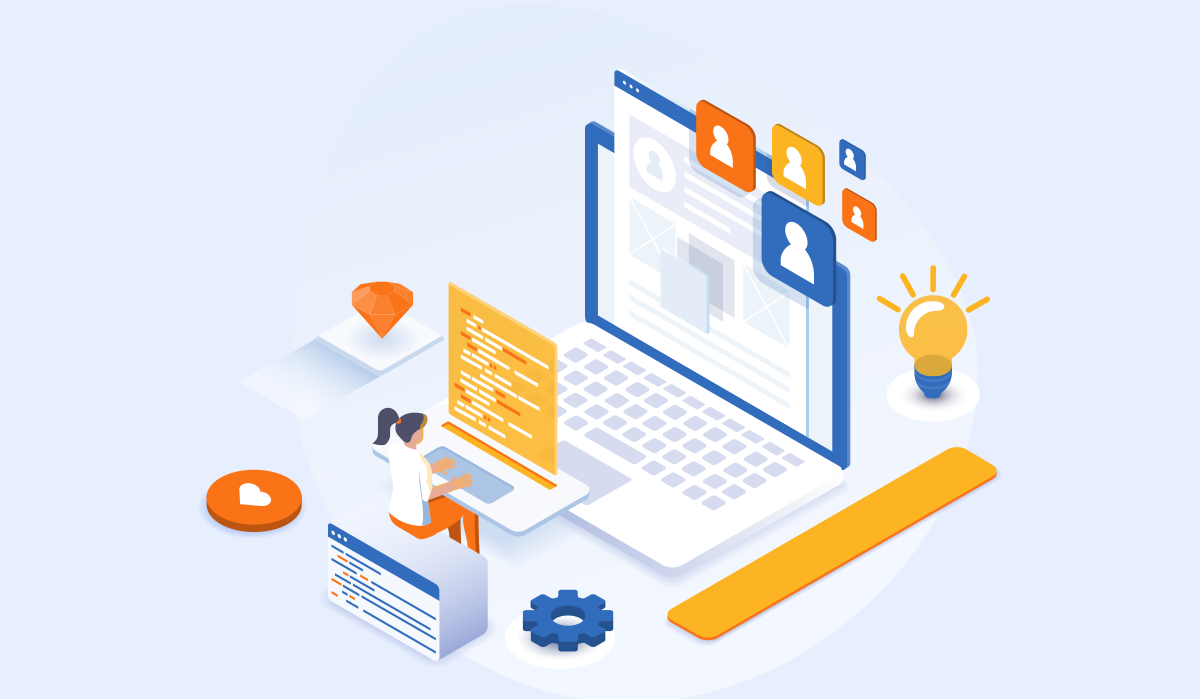
Nearly all digital transformation platforms utilize API integration. The technology enables data exchange by connecting systems through their APIs.
This enables organizations to create or alter services by finding their functionalities through their API and integrating or disintegrating them. The unified system allows organizations to create new services or features by selecting the right application.
Membership organizations can utilize API integrations to sync data, improve productivity, and boost ROI. Due to its ability to replace a number of digital tools, it improves workflow, prevents systems interruptions, and reduces overall costs.
Robotic Process Automation (RPA)
Robotic Process Automation (RPA) is a combination of technology that uses AI, machine learning, and chatbots to automate workflows. By using this technology, organizations are able to streamline workflows, optimize outcomes, reduce errors, and manage their systems more efficiently.
While RPA is used in endless ways in an organization, it's mostly used to handle human error-prone tasks, like invoicing, migrating, and auditing. In advanced cases, they reconstruct the entire workflow to allow for faster and more accurate operations, validations, and verification without the need to pause.
The combination of RPA with big data allows associations to get a bird-view of their members’ patterns. As a result of this information, associations can improve their member recruitment and engagement strategies to make them more effective and efficient.
Cloud-Based Technology
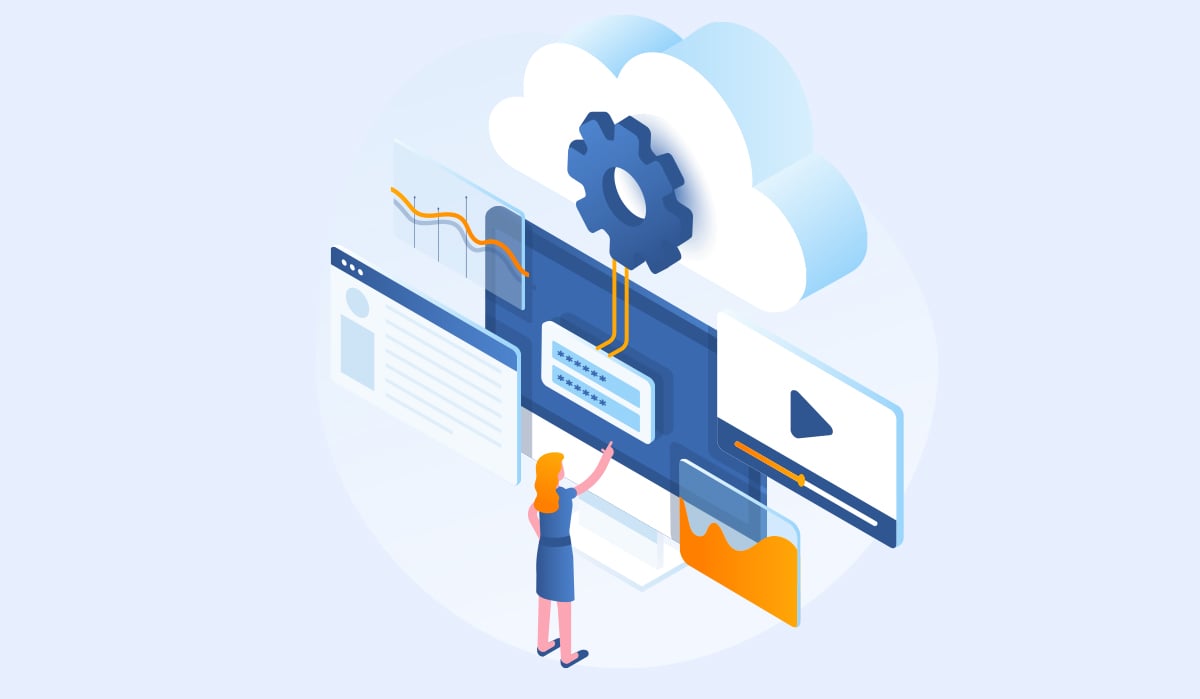
There are limitations to traditional storage services when it comes to handling large amounts of data securely and economically. Therefore, a growing number of industries are migrating to the cloud.
Cloud computing stores all the organization's data, eliminating the need to download heavy files, find IT experts, or update programs manually.
Managing memberships through a cloud platform is best done with a SaaS (Software as a Service). This technology can be used by organizations that have members to strengthen relationships, increase engagement, and automate processes.
Digital Transformation Consulting Services for Associations

A digital transformation consultant helps businesses achieve their full potential through technology. With their services, an organization can quickly transform using digital tools with a lower risk of failure.
These digitalization consulting firms are best for companies that are not prepared or experienced enough to implement such a process.
Thus, they evaluate the current state of an organization and develop strategies to enhance productivity and creativity in the workplace to offer better customer service.
All-in-all, a business transformation consulting provider helps organizations in:
Developing a Business-Driven Data and Technology Platform
A digitalization consulting firm can help businesses improve quality, accelerate innovation, and reduce costs.
Using digital tools and analytics expertise, they are able to improve both internal and external processes of the organizations.
Creating and Implementing an Integrated Strategy
The plans, actions, and goals they set provide insight into the different ways your organization can deal with competitors' strategies and customer needs.
Furthermore, they determine trends, opportunities, and consumer behavior, allowing them to develop the best approach for future changes to a business.
Selecting the Right Talent and Expertise
They assist hiring managers and executives in finding the right talents for the jobs. The process involves partnering with hiring agencies, conducting interviews, and recruiting the best candidates.
Ensuring Top-Level Management Commitment to Leadership
With the help of IT transformation technology, they empower top and mid-level management. Moreover, they provide information about organizational changes and strategies beneficial to the lower levels of the hierarchy.
Keeping Track of the Transformation Progress
Most often, organizations cannot keep track of their progress. Consultants have a dedicated team and tools to analyze their performance and share their digitalization goals.
Developing an Agile Mindset Within the Organization
Creating an agile culture is the most challenging step in the transformation journey. In order to achieve this mindset, the team helps companies develop a clear vision, a culture of adaptation, as well as a consistent way of delivering value.
Thinking of hiring one for your association? Here are our top picks for digital transformation consulting providers for member-based organizations.
Digital Transformation Platforms for Associations
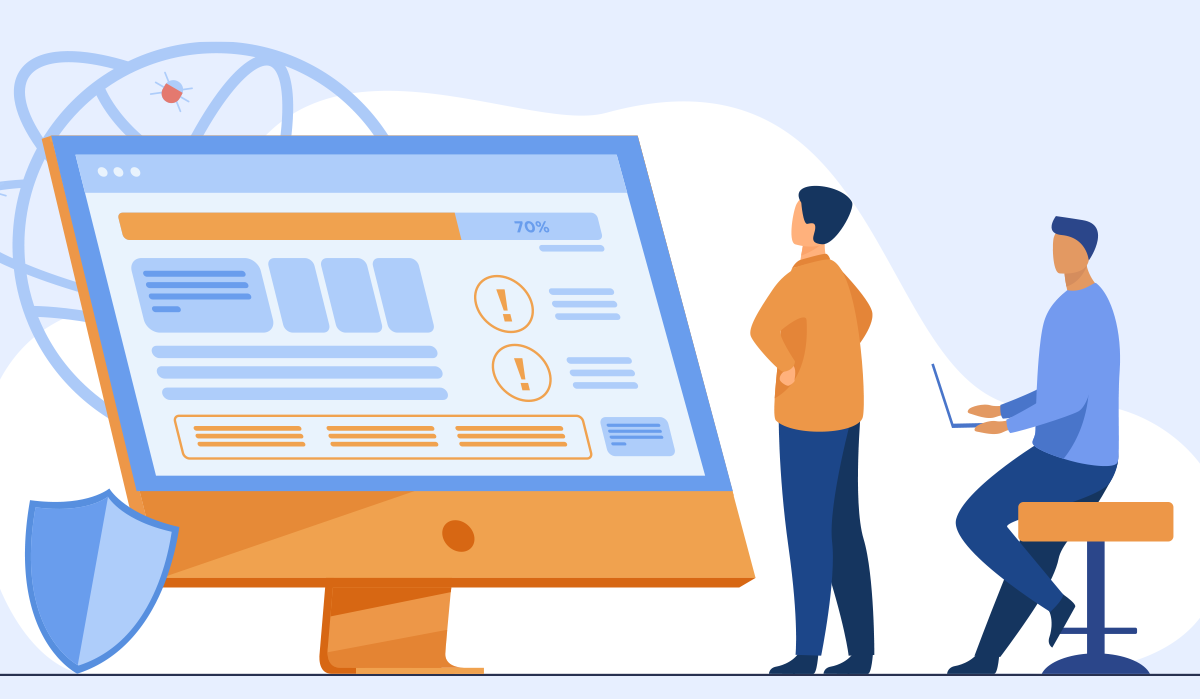
A digital transition platform is a set of tools businesses use to achieve successful digitalization.
The ultimate goal of these platforms is to improve their competitive position while providing exceptional value to their customers.
Different Types of Digital Transformation Platforms
Digitalization platforms can consist of a single application or a set of tools. Additionally, each type of platform operates differently based on its main purpose.
Here are four types of platforms to help you decide what type is right for you.
Aggregation Platforms
A platform that aggregates numerous resources and connects users to the best ones in real-time is an aggregation platform. Their main function is to execute tasks such as generating leads and converting them.
Social Platforms
Social platforms are crucial for brand awareness and customer interaction.
They do not accomplish tasks or complete transactions. However, they can be used to redirect prospects to the aggregation platforms so that they can perform a specific action like signing up for a membership, booking a demo, or making a purchase.
Learning Platforms
Learning platforms are training portals or management systems that provide reliable resources to employees for upskilling. They have friendly user interfaces with interactive features such as challenges, rewards, and points to encourage users to educate themselves.
Mobilization Platforms
Mobilization platforms connect people to achieve larger goals. This is accomplished by uniting and enabling people with common interests and grounds to achieve their mission by bringing them on one page.
What Factors Should You Consider When Choosing a Digital Platform?
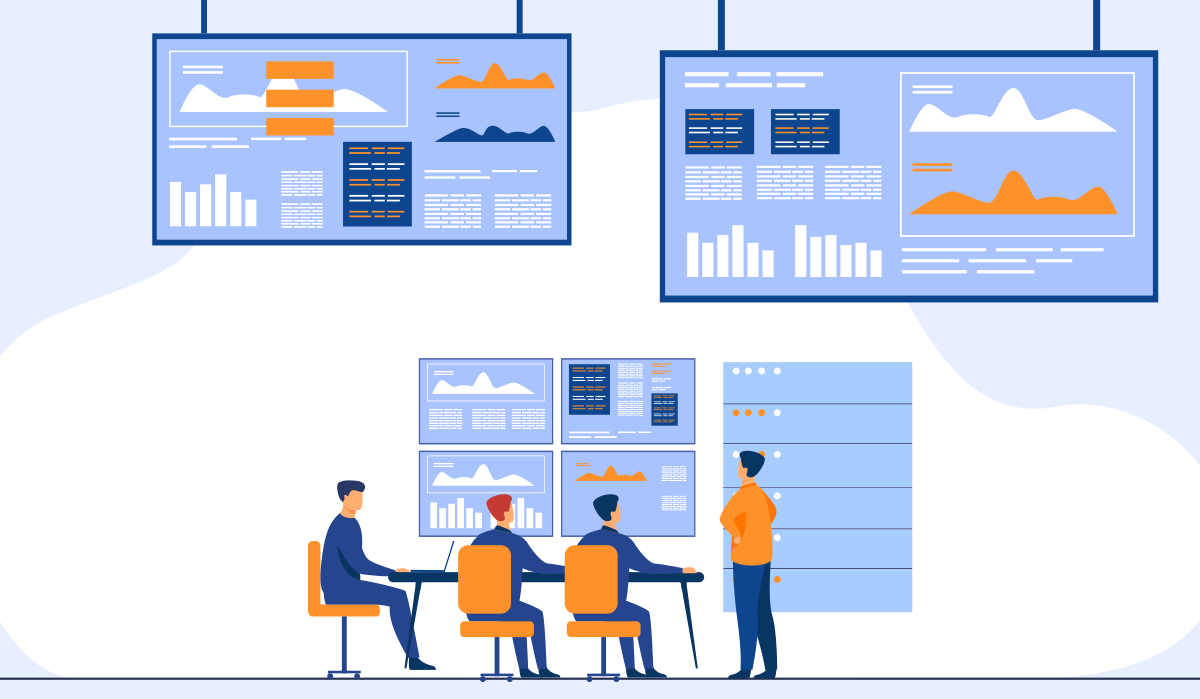
Your ideal digital transformation platform should include all the tools you need. Essentially, you should look for a platform that possesses the following characteristics to ensure that it will help you achieve your long-term objectives.
- Low-code with easy drag and drop models.
- Easy to deploy so you can build and release at scale.
- Cloud-based to develop a seamless operating system.
- Facilitate agile software development.
- Mobile-first with a responsive user interface.
(Check out our comprehensive list of the best digital transformation platforms for chapter-based associations)
Glue Up: A Leading Digital Transformation Platform for Member-Based Organizations
Glue Up is counted as one of the top digitalization platforms that are helping membership organizations achieve their transformation goals by adding technologies and innovation.
As an all-in-one CRM, it streamlines processes, builds communities, and automates workflows.
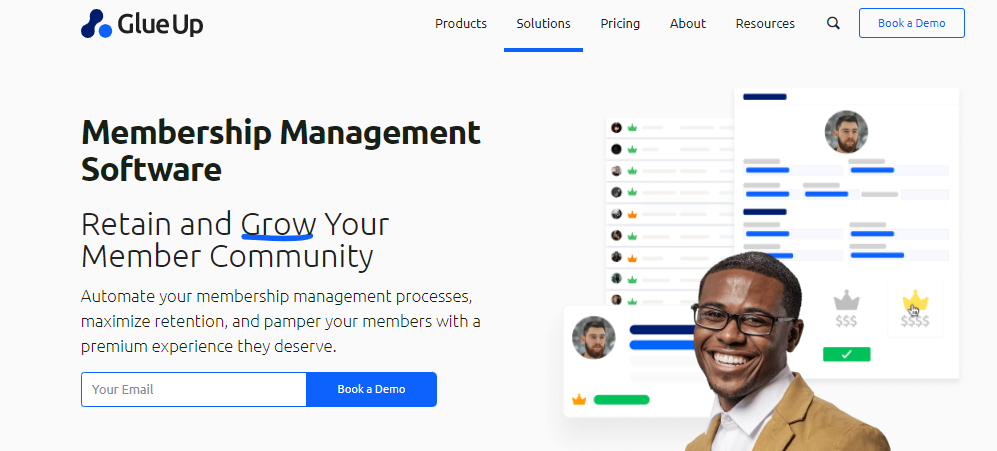
A significant advantage of Glue Up's membership transformation platform is that it has all the characteristics of an ideal digital transformation platform. It is designed to be cloud-native, low-code, and mobile-first which is easy to deploy and supports agile development.
Streamlined Management Workflows - With its cutting-edge technology, Glue Up streamlines everything from creating custom forms to synchronizing members' data. As a result, it improves efficiency while reducing cost.
Culture of Quality and Innovation - By simplifying management workflows, it encourages employees to focus on their core mission, thereby supporting a culture of quality and innovation.
Enhanced Digital Networking - The private community app is a social digitalization platform that allows members to network among themselves. With this app, they can post, create groups, exchange business cards, and engage in 1-on-1 chat.
Informed Decision through Analytics - With the platform's analytics section, you can gain insights into events, email marketing, and finances of your members thus helping you make informed decisions.
Looking forward to a successful digital business transformation of your association? Start your digitalization journey today by requesting a demo.
FAQs
What are the 4 types of digital transformation?
As part of a company's transformation strategy, digital transformation can take the form of four main types:
- Process Transformation
- Business Model Transformation
- Domain Transformation
- Cultural/Organisational Transformation
What is an example of digital transformation?
Every type of organization requires a different approach to business transformation. Even though there is not a cookie cutter strategy for all industries, some of the top examples of digital transformation include:
- Shifting to cloud computing
- Automating workflows
- Upskilling employees
- Transitioning from snail mail to digital marketing
What are the top 3 trends of digital transformation?
There are a number of technological trends reshaping the event industries digitally. A top example is Artificial Intelligence, which can accelerate the digital transformation of member-based organizations. The other top trends include:
- Augmented and Virtual Reality
- Blockchain Technology
- Gamification
What are the 3 critical elements of digital transformation?
Digital transformation occurs in three key areas of the business:
- The customer experience (driving value to your members)
- Business model
- Operations and workflows
What is the cost of digital transformation?
The cost of digital transformation is quite high, but if implemented correctly, it can result in significant cost savings over time. There is no set cost for each digital transformation project, but it is predicted that businesses will spend around $2.8 trillion on digitalization projects globally by 2025.
How can I measure ROI in digital transformation?
The ROI (Return on Investment) in digital transformation can simply be calculated using this formula:
(Net profit = Revenue - Investment cost)
Here, investment costs may include digital tools, staff training, and organizational restructuring while the revenues can be viewed in the context of:
- Sales growth
- Customer retention, customer satisfaction, and new customer acquisition
- Quality improvement in processes
- Improved product quality
- Increased engineering productivity and design quality


